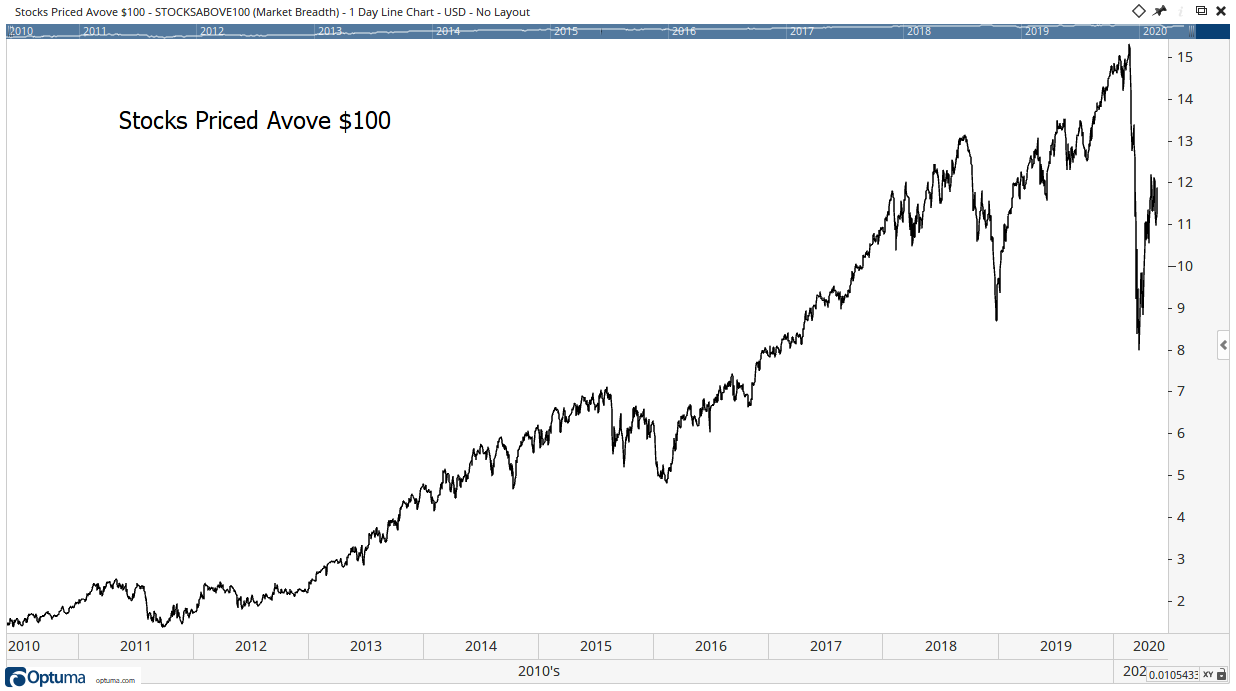In the early 1990s, a popular trading strategy was to buy stocks priced near $100 a share, and buyers expected stock splits so the price would be attractive to small investors.
When a stock splits, the company increases the number of shares outstanding by giving more shares to current shareholders. Most common was a 2-for-1 stock split with each shareholder basically doubling the number of shares they owned.
Stock Splits Lower Price to Attract Individual Investors
Consider a 2-for-1 split. Assume you owned 10 shares priced at $100 each. They are worth $1,000. After the split, you own 20 shares worth $50 each. They are still worth $1,000.
The split had no impact on the value of the company. But low-priced stocks were more attractive to individual investors. Companies often announced splits when prices topped $100 a share to keep the stock in double digits.
This led to that trading strategy. Academic studies confirmed that stocks outperformed after announcing splits. Potential gains were significant. Stocks that split at least 2:1 beat the broad stock market by an average of 8% in the year after the split.
In the record long bull market that recently ended, companies stopped splitting their stock. The chart below shows the percent of publicly traded companies trading at more than $100 a share. The recent drop in the total number was caused by the stock market crash of February-March, but the trend is clearly up.

Source: Optuma
Splits never changed anything except investor accessibility. They did not affect any items on the income statement or other financial data. They simply allowed more investors to buy the stock.
Market changes allow many investors to buy high-priced stocks.
Charles Schwab, for example, allows clients to buy fractional shares of S&P 500 constituent companies commission-free. Schwab Stock Slices requires just a $5 investment in a company. Fidelity allows investments as small as $0.01, and Robinhood allows investments as small as $1 in any exchange-traded stock or ETF.
These changes tell us investors are thinking like traders rather than investors. Many are not trying to establish long-term positions in companies. They are thinking of gains in percentage terms rather than dollars.
This means they will react ruthlessly to a sustained bear market. Individuals no longer view an extended decline as an opportunity to build positions in safe companies. They will panic as losses mount and sell indiscriminately.
The fact that companies don’t split shares to attract small investors indicates they have no loyalty to shareholders. The fact that shareholders don’t have to save to buy a stake in a company indicates they have no loyalty either.
The increase in share prices tells us that stocks are for trading rather than investing.
• Michael Carr is a Chartered Market Technician for Banyan Hill Publishing and the Editor of One Trade, Peak Velocity Trader and Precision Profits. He teaches technical analysis and quantitative technical analysis at New York Institute of Finance. Mr. Carr also is the former editor of the CMT Association newsletter Technically Speaking.
Follow him on Twitter @MichaelCarrGuru




